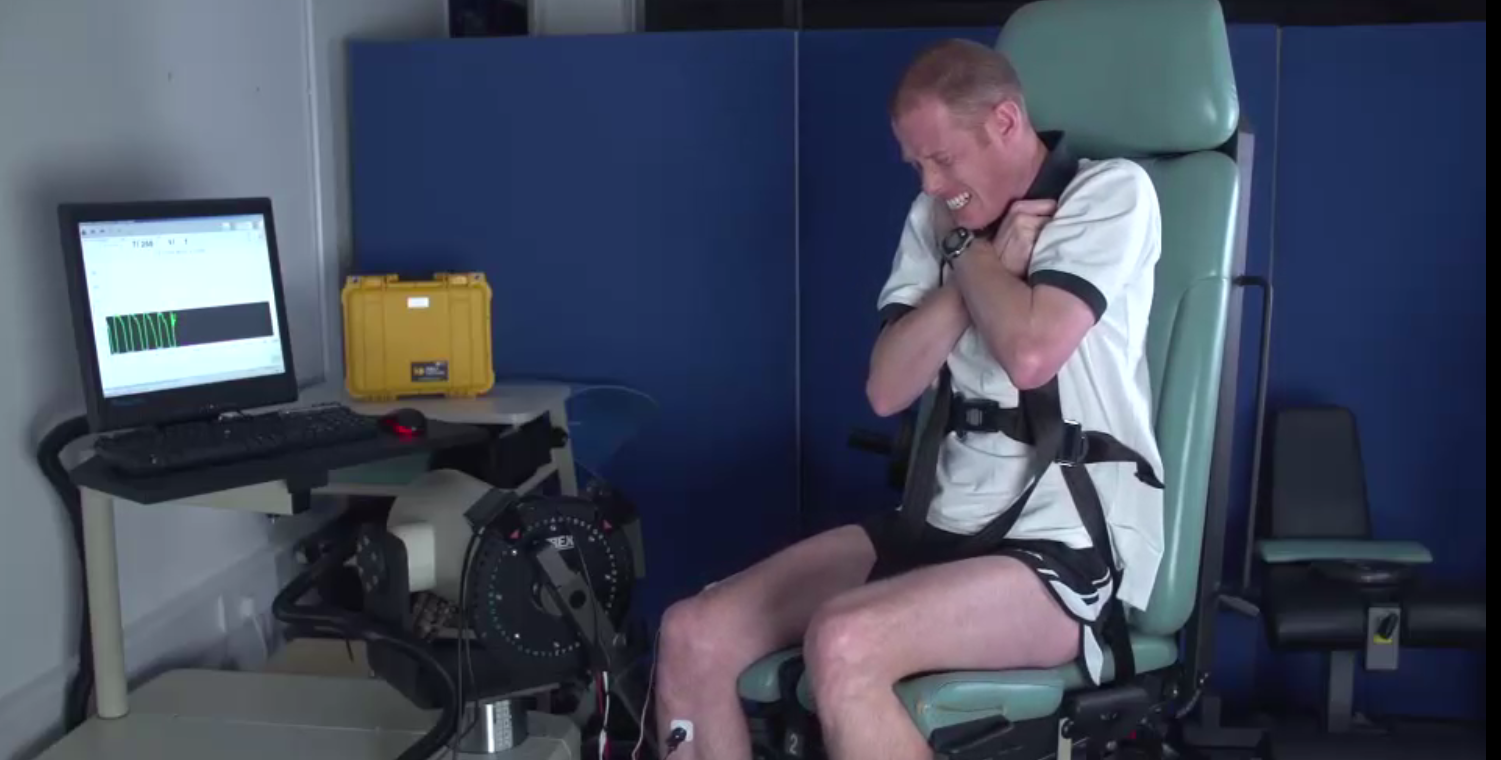Emergent properties of the fatiguing neuromuscular system.
Summary
Emergent phenomena are those which cannot be predicted or explained by examining individual system components in isolation. The current project will examine two emergent properties of the neuromuscular system: ‘complexity’ in muscle contractions (fluctuations in muscle torque where steadiness would be expected), and nonlinearities in muscle metabolism and fatigue as the intensity of muscle contractions is increased. Both of these phenomena increase the difficulty of motor tasks and physical activity, thus reducing the quality of life. Establishing the physiological link between fatigue, reduced complexity, and increased muscle metabolic rate is an important step toward mitigating their negative consequences.
Objectives
During the proposed project we intend to:
- Develop a computational model of fatiguing muscle contractions whose output faithfully represents the complexity of muscle torque output.
- Test the hypothesis that physiological complexity and muscle metabolic rate are tightly coupled during exercise.
- Establish the physiological bases for the fatigue-induced loss of muscle torque complexity and its link to the critical torque.
- Extend the measurement of torque output complexity from static contractions of a single muscle group (the knee extensors) to ‘whole body’ dynamic exercise (cycling).
People
Dr Mark Burnley, Principal investigator, School of Sport and Exercise Sciences, University of Kent.
Dr Samantha Winter. Co-investigator School of Sport and Exercise Sciences, University of Kent.
About
Muscular fatigue is commonly experienced during physical exercise, and can be measured as a loss of maximal muscle torque-generating capacity. Fatigue not only limits sport and recreational activity, but can also make tasks of daily living more difficult, reducing the quality of life. Muscle fatigue can develop very rapidly above a critical level of effort (known as the ‘critical torque’), and this is accompanied by a dramatic increase in the amount of energy required to maintain any level of muscle torque output. These effects are not predictable from examining individual muscle fibres, and so they are an emergent property of the neuromuscular system.
Another emergent property of this system is that when we try to produce a smooth and steady muscle torque (holding a kettle, for example), the actual torque produced fluctuates. The pattern of these fluctuations has an identifiable structure (i.e., it is ‘complex’). Healthy systems possess complex fluctuations. Unhealthy or failing systems lose this complexity. We have shown that fatigue above the ‘critical torque’ results in a loss of muscle torque complexity. This project is designed to find the mechanisms responsible.
